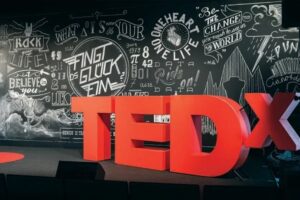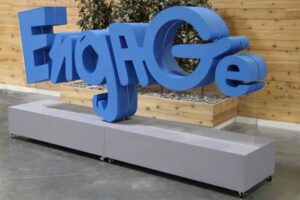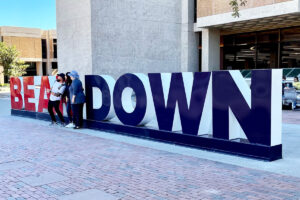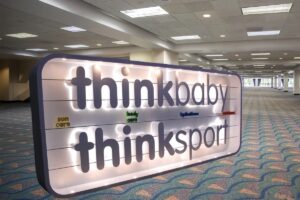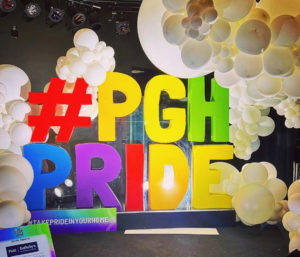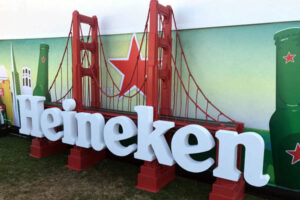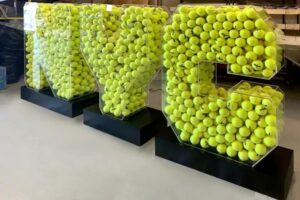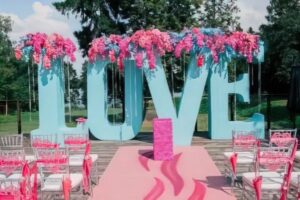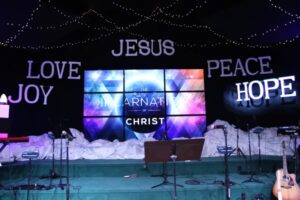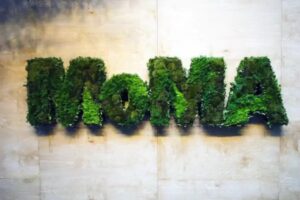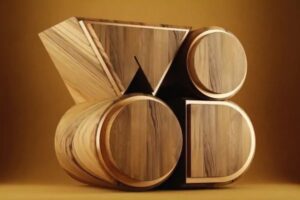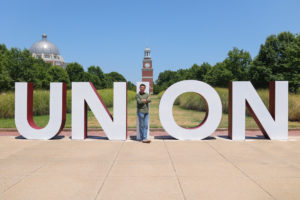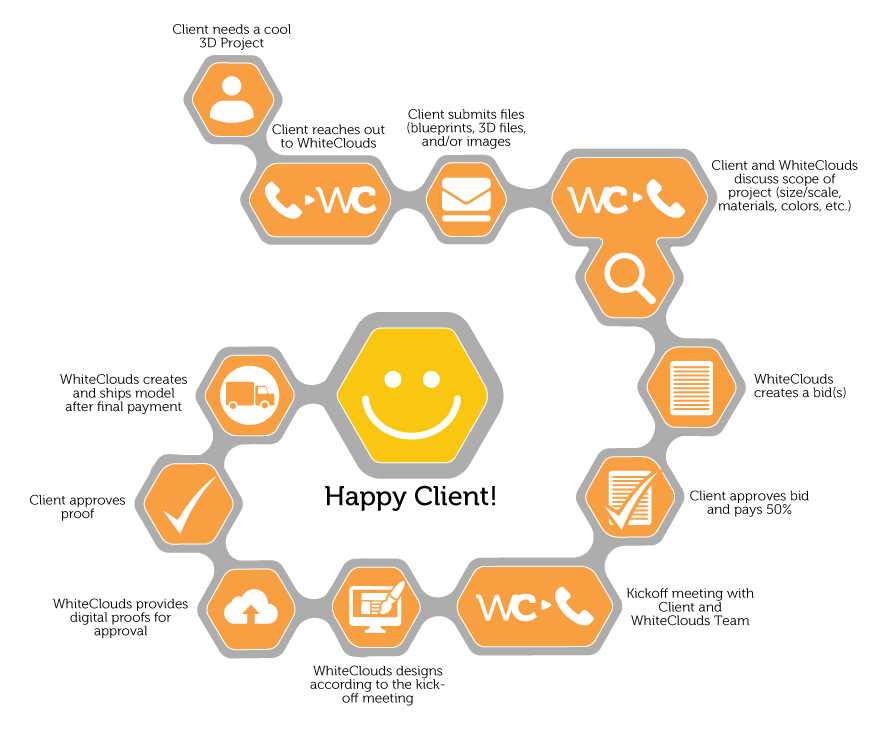3D Letters
We build 3D Letters
Table of Contents
3D Letters
Words have power. They carry our thoughts, emotions, and ideas, but what if they could transcend the boundaries of paper and screens? Enter the thrilling realm of 3D letters, where typography leaps off the page and into a breathtaking three-dimensional landscape. Imagine walking down a bustling city street, surrounded by a vibrant mix of colors and textures. Suddenly, your gaze is captured by a massive mural, but there’s something unique about it—every letter is boldly protruding from the surface, seemingly defying gravity. This is the enchanting allure of 3D letters, a form of visual expression that takes typography to new heights, quite literally.
The technique behind 3D letters involves transforming two-dimensional text into multidimensional masterpieces. By utilizing various artistic tools, including foam, wood, metal, or even advanced 3D printing, skilled artists and designers breathe life into words, giving them depth, dimension, and an unmistakable presence.
One of the most thrilling aspects of 3D lettering is its versatility. Whether you’re walking the streets of a bustling metropolis or exploring the digital landscape, 3D letters have found their place in various mediums. From eye-catching signage adorning storefronts and billboards to animated logos that dance across screens, 3D letters have become an integral part of modern design, captivating audiences with their unique aesthetic and ability to grab attention.
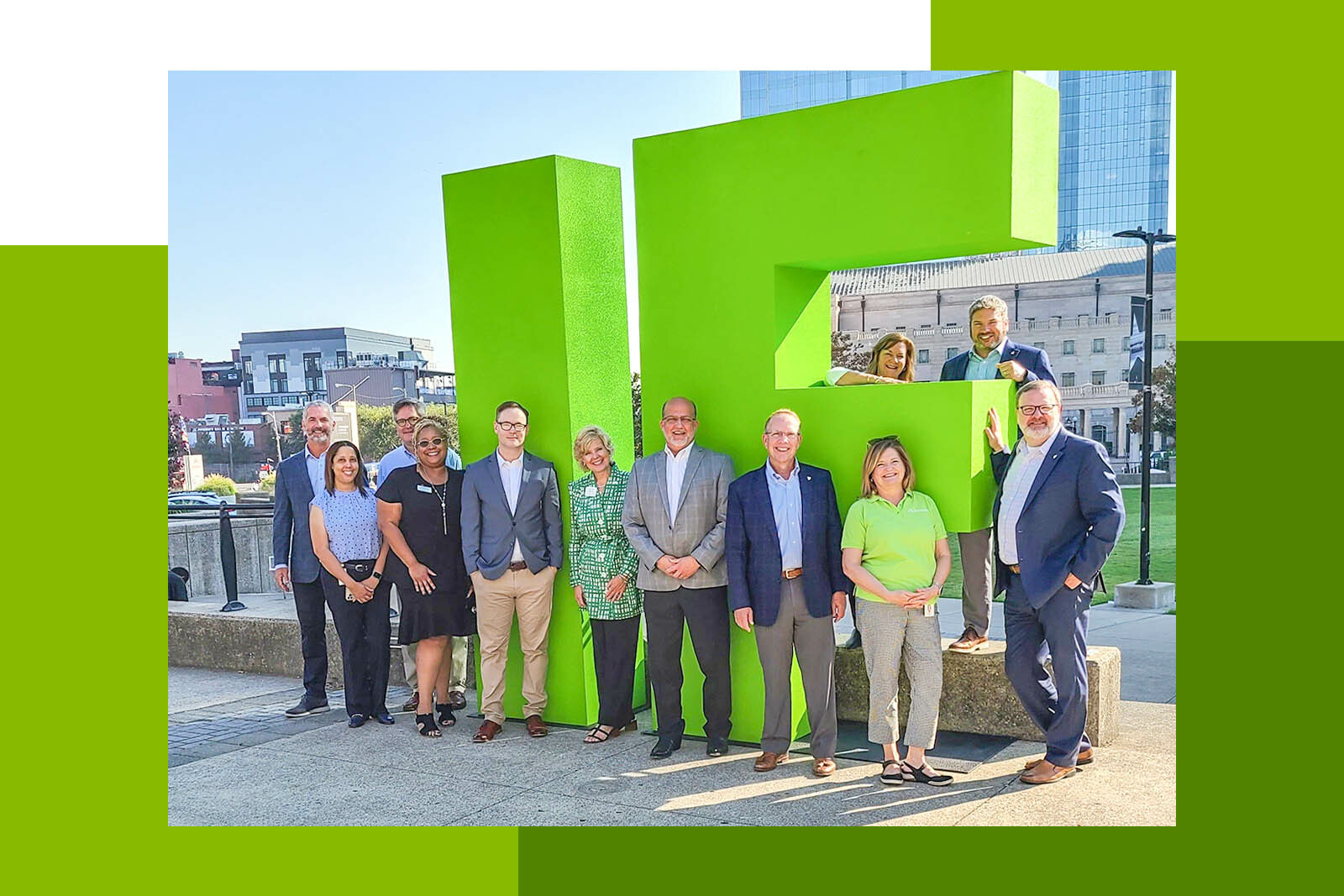
But it’s not just about grabbing attention—3D letters possess an innate power to evoke emotion and convey meaning. The careful manipulation of form, shadow, and perspective in 3D lettering allows artists to enhance the impact of their message. The letters become more than just words; they become storytellers, engaging the viewer on a deeper level.
To truly appreciate the artistry behind 3D letters, we must recognize the skilled individuals who bring them to life. These talented typographers, designers, and craftsmen possess a keen understanding of form, proportion, and aesthetics. They meticulously plan and execute their creations, combining technical expertise with boundless creativity. Each letter is carefully crafted, ensuring that it seamlessly integrates into the overall composition, while still maintaining its unique personality.
But 3D letters aren’t confined to the realm of professionals alone. With the advent of accessible design tools and software, enthusiasts and aspiring artists can explore the world of 3D lettering and unleash their creativity. Platforms like Blender, Adobe Illustrator, and even online tutorials provide stepping stones into this thrilling realm, allowing anyone to experiment, learn, and create their own stunning typographic sculptures.
As we delve deeper into the world of 3D letters, we uncover a treasure trove of possibilities. Imagine an exhibition where the alphabet comes to life, where letters twist, turn, and interact with each other, forming captivating installations that immerse visitors in a fantastical world of words. Or envision a movie title sequence that mesmerizes audiences with its striking three-dimensional lettering, setting the tone for the entire film.
In the digital realm, the potential for 3D letters is equally boundless. Virtual and augmented reality technologies open up new dimensions for typography, allowing users to interact with letters in ways previously unimaginable. From immersive virtual environments to interactive games, 3D letters have the power to enhance our digital experiences, making them more engaging, dynamic, and unforgettable.
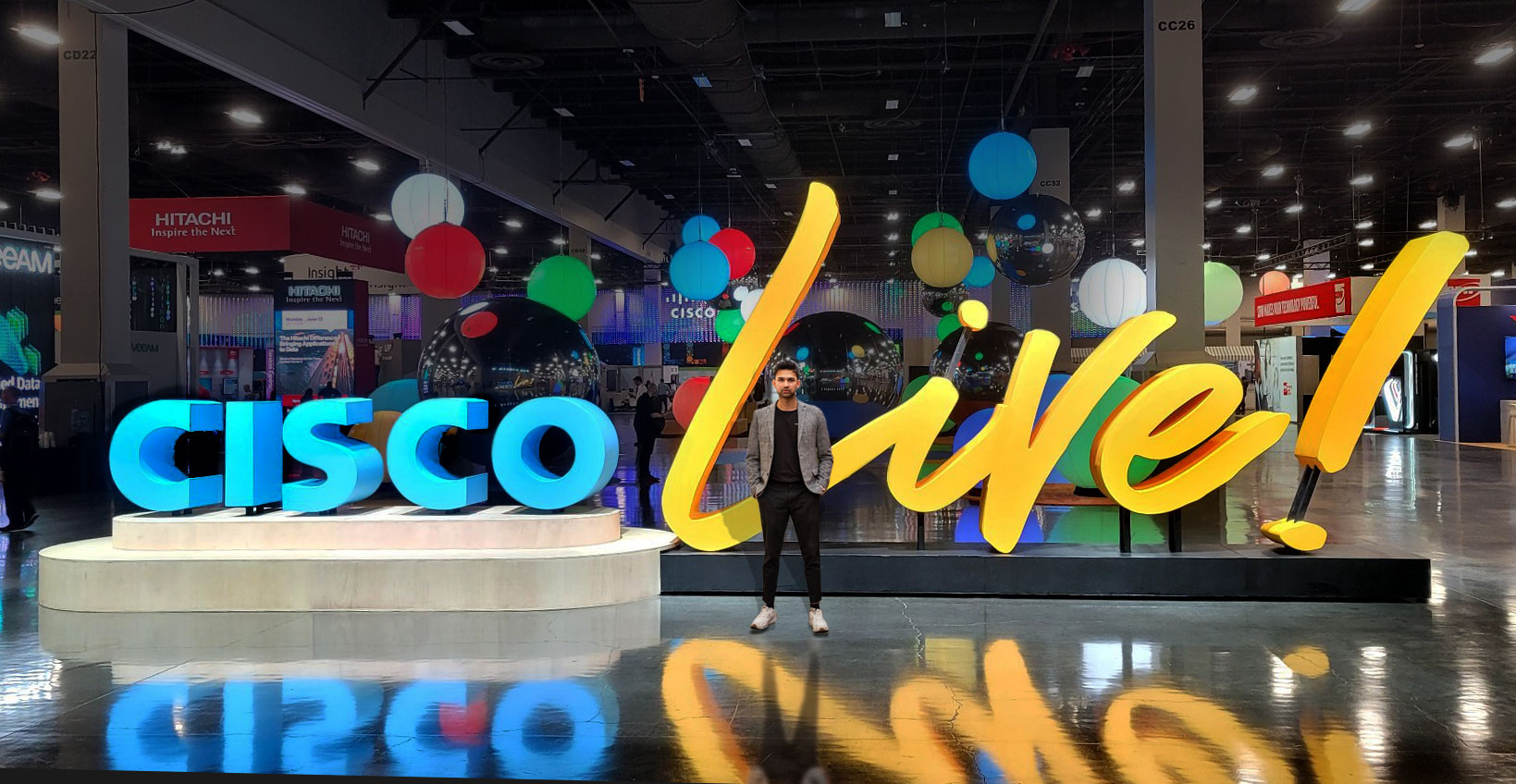
Typography has come a long way since its humble beginnings, and today, we find ourselves in a world where letters transcend the confines of two dimensions. The evolution of technology, coupled with artistic ingenuity, has given rise to a diverse array of 3D letters that captivate and inspire. Here are the various types of 3D letters, each with its own unique characteristics and visual impact.
Extruded Letters
Extruded letters are the quintessential form of 3D lettering. They take a two-dimensional shape and give it depth by extending it along a perpendicular axis. This technique creates the illusion of solidity and adds a tangible presence to the letters. Extruded letters can be found in various materials, such as metal, wood, foam, or even plastic. They are often used in signage, architectural applications, and branding, providing a bold and impactful visual statement.
Inflated Letters
Inflated letters, also known as inflatable or pneumatic letters, add an element of whimsy and playfulness to 3D typography. These letters are created by filling a flexible material, such as PVC or fabric, with air. The result is a lightweight and dynamic form that can be easily inflated and deflated. Inflated letters are commonly used in event decorations, promotional displays, and experiential marketing campaigns, offering a unique visual aesthetic and a touch of enchantment.
Solid Material Letters
Solid material letters are perhaps the most traditional and widely recognized form of 3D physical letters. Crafted from materials such as wood, metal, plastic, or even stone, these letters possess a tangible weight and presence. Skilled craftsmen meticulously shape and carve these materials to create letters that stand out with their solidity and durability. Solid material letters find their place in various applications, including signage, architectural installations, interior decor, and branding.
Cutout Letters
Cutout letters, also known as hollow or negative space letters, take a different approach by emphasizing the absence of material. Rather than having a solid form, these letters are created by cutting away the excess material, leaving behind the outline or silhouette. This technique allows for creative play with the negative space, resulting in visually intriguing and delicate letterforms. Cutout letters are commonly used in signage, window displays, and wall art, where they make a striking impact by utilizing the interplay of light and shadow.
Layered Letters
Layered letters take the concept of depth to a whole new level. By stacking multiple layers of material, these letters create a three-dimensional effect that adds complexity and visual interest. Each layer can be made from various materials, colors, or textures, enabling a myriad of design possibilities. The combination of different layers adds depth and dimension to the letters, making them visually dynamic and captivating. Layered letters are often utilized in branding, displays, and dimensional signage, where they create a sense of depth and sophistication.
Sculptural Letters
Sculptural letters push the boundaries of creativity and imagination, transforming typography into miniature works of art. These letters are crafted with meticulous attention to detail, capturing intricate shapes, textures, and sculptural elements. Sculptural letters can be made from a wide range of materials, including clay, resin, wire, or even food items for unique applications. This form of 3D lettering is often seen in art installations, exhibitions, and creative projects, where the letters themselves become the focal point of the composition.
Interactive Letters
In the age of technology and interactivity, letters have evolved to engage the senses and encourage participation. Interactive letters incorporate elements such as lights, movement, or touch-sensitive surfaces to create an immersive experience. These letters are often used in experiential marketing, exhibitions, and interactive installations, captivating audiences by allowing them to engage and interact with the letters in unexpected ways.
Illuminated Letters
Illuminated letters add an enchanting glow to the world of 3D physical typography. By integrating lighting elements into the design, these letters come to life with vibrant colors and captivating effects. Illuminated letters can be crafted using various techniques, including backlighting, LED strips, or even neon tubing. This form of 3D lettering finds its place in signage, advertising, and decorative displays, where the play of light enhances the impact and visibility of the letters.
Organic Letters
Organic letters break away from traditional typographic forms, embracing fluidity and natural shapes. Inspired by the curves and contours found in nature, these letters evoke a sense of movement and grace. Organic letters can be crafted from materials like clay, wire, or even fabric, allowing for a more freeform and expressive approach. Organic letters offer a unique and artistic touch to 3D physical typography. They are often seen in art installations, creative projects, and expressive branding, where the fluidity of the letters adds a sense of whimsy and elegance.
Geometric Letters
Geometric letters embrace clean lines, sharp angles, and symmetrical forms. They are characterized by their precise shapes and structured compositions, offering a modern and minimalist aesthetic. Geometric letters can be constructed using materials like metal, acrylic, or even 3D printing techniques, ensuring precision and accuracy in their design. These letters are commonly used in contemporary branding, architectural signage, and interior design, where their geometric nature creates a sense of order and sophistication.
Retro Letters
Retro letters take inspiration from bygone eras, channeling nostalgia and vintage charm. These letters often incorporate elements from the mid-20th century, such as bold curves, decorative details, and vibrant colors. Retro letters can be made from materials like metal, neon, or even retro-inspired digital displays. They are frequently utilized in signage for retro-themed businesses, entertainment venues, marquees, and branding campaigns aiming to evoke a sense of nostalgia and classic appeal.
Customized Letters
In the world of 3D letters, customization knows no bounds. From personalized fonts and letterforms to unique materials and finishes, customized letters offer endless creative possibilities. These letters are tailored to individual preferences, allowing for the exploration of unique styles and designs that perfectly align with the vision of a project or brand. Customized letters can be found in various applications, including event decorations, personal art pieces, and bespoke signage.
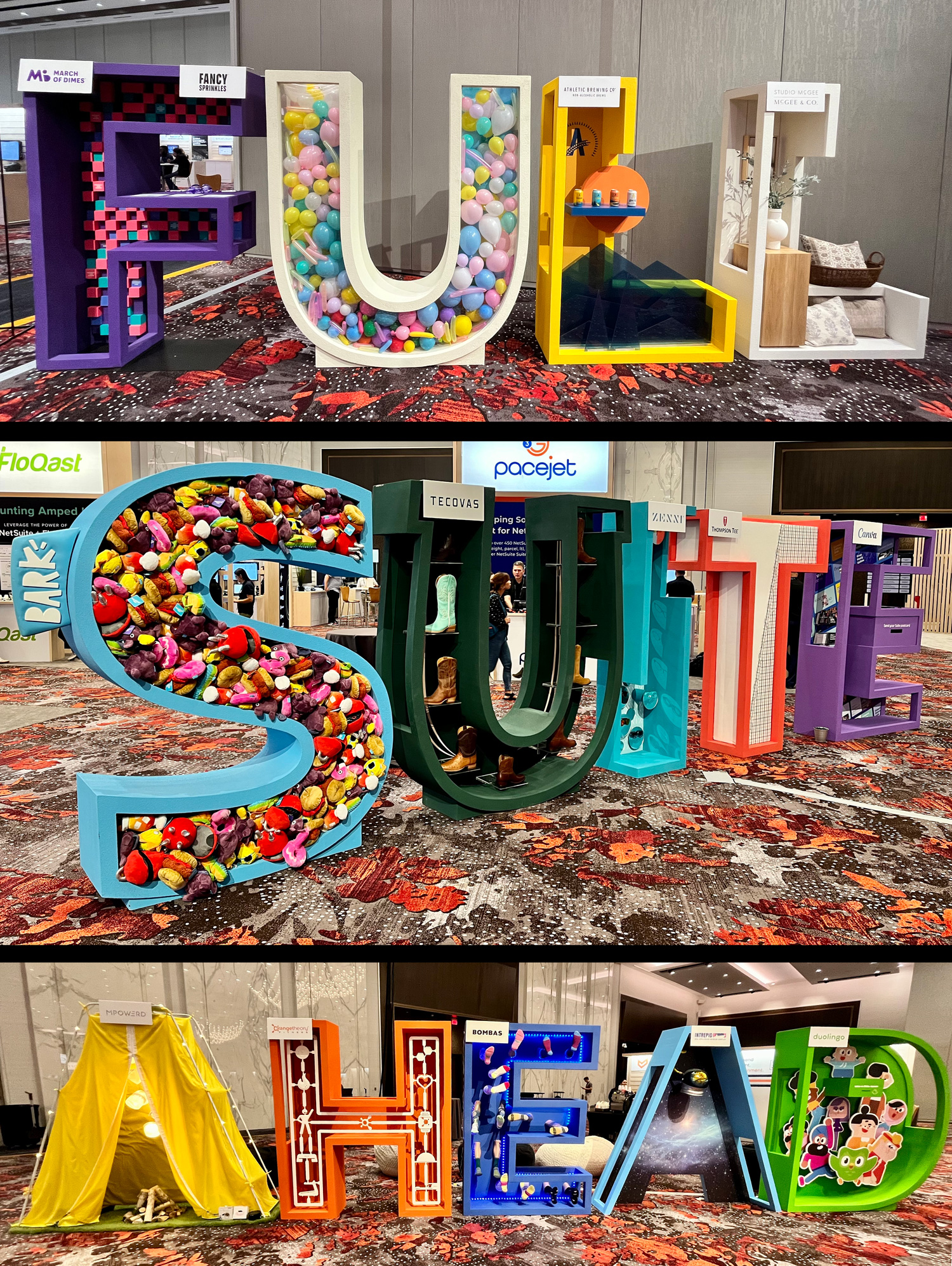
In the realm of visual communication, 3D letters have become powerful tools that transcend traditional typography. With their depth, dimension, and tangible presence, these captivating letterforms find their place in a wide range of applications. From branding and advertising to interior design and art installations, 3D letters add a touch of magic and captivate audiences in ways that flat typography simply cannot. Many diverse uses of 3D physical letters and discover how they shape our visual landscape.
- Signage and Wayfinding: One of the most common and impactful uses of 3D letters is in signage and wayfinding systems. From exterior building signs to directional signage within large complexes, these letters serve as attention-grabbing focal points. Crafted from durable materials such as metal or acrylic, 3D letters offer longevity and visibility in outdoor environments. Their depth and dimension allow for enhanced readability and make them stand out, ensuring that they effectively guide and inform people in various settings, such as retail spaces, corporate campuses, or public facilities.
- Branding and Logo Design: Brands and businesses strive to create a memorable and recognizable identity, and 3D letters play a crucial role in achieving that goal. By incorporating three-dimensional letterforms into logos and branding materials, companies can elevate their visual presence and create a lasting impression. These letters bring a sense of sophistication and professionalism to a brand, showcasing its attention to detail and commitment to quality. Whether displayed on storefronts, promotional materials, or digital platforms, 3D letters enhance brand recognition and help businesses leave a lasting mark in the minds of consumers.
- Interior Decor and Environmental Graphics: In interior design, 3D letters serve as eye-catching elements that enhance the aesthetic appeal of spaces. Whether used as wall art, freestanding sculptures, or integrated into architectural features, these letters add texture, depth, and personality to interior environments. They can be customized to align with a specific theme or style, and their presence transforms ordinary spaces into engaging and visually striking experiences. Additionally, in large-scale environments such as airports, museums, or corporate lobbies, 3D letters are utilized as part of environmental graphics to convey information, enhance branding, or create immersive experiences.
- Retail Displays and Visual Merchandising: The world of retail thrives on capturing attention and creating memorable experiences, and 3D letters are invaluable tools in achieving these goals. From window displays to in-store installations, these letters draw customers’ gaze, pique curiosity, and effectively convey promotional messages. By incorporating 3D physical letters into visual merchandising, retailers can elevate the overall aesthetics of their displays, making them more impactful and enticing. The depth and dimension of these letters allow for creative manipulation of space, creating visually dynamic arrangements that enthrall customers and boost sales.
- Event Decor and Experiential Marketing: Events are all about creating immersive and unforgettable experiences, and 3D letters provide the perfect opportunity to leave a lasting impression. Whether it’s a trade show booth, a corporate event, or a wedding reception, these letters serve as captivating focal points that anchor the visual design. They can be personalized to match the event theme, incorporate branding elements, or convey a specific message. The versatility of 3D letters allows for endless creative possibilities, transforming event spaces into captivating environments that engage attendees and amplify the impact of the occasion.
- Art Installations and Sculptures: Artists and sculptors have long embraced the expressive potential of three-dimensional forms, and 3D letters have become an integral part of contemporary art installations. These letters provide a unique canvas for artists to explore typography, language, and communication in their work. Whether using traditional materials like metal or wood or pushing the boundaries with unconventional mediums, artists create visually stunning sculptures and installations that challenge perceptions and evoke emotions. 3D letters offer a tactile and immersive experience for viewers, inviting them to interact, reflect, and engage with the art on a deeper level.
- Film and Television Production: The world of film and television relies heavily on visual storytelling, and 3D letters play a crucial role in set design and production. From creating iconic title sequences to building immersive environments, these letters become essential elements in establishing the mood, theme, and atmosphere of a production. Whether it’s a futuristic sci-fi movie or a period drama, these letters help transport viewers into the world being depicted on the screen, adding a layer of realism and enhancing the overall visual experience.
- Architectural Signage and Monuments: Architectural signage and monumental lettering serve as landmarks and identifiers in public spaces. From large-scale city entrance signs to commemorative plaques, 3D letters become enduring symbols of identity and significance. Crafted from durable materials that withstand the elements, these letters become part of the urban fabric, guiding and informing people while adding aesthetic value to the surroundings. Whether in parks, plazas, or historical sites, these captivating letters become integral components of the built environment, embodying a sense of place and history.
- Educational and Learning Tools: In educational settings, 3D letters are powerful tools for promoting literacy, language development, and tactile learning experiences. Whether in classrooms or libraries, these letters allow students to explore the shapes, forms, and textures of letters, helping them grasp the fundamentals of reading and writing in a more interactive and engaging way. The three-dimensional nature of these letters adds a multisensory dimension to learning, making it more enjoyable and effective for students of all ages.
- Public Installations and Civic Engagement: Public installations featuring 3D letters serve as symbols of civic pride, unity, and engagement. They become focal points in public spaces, encouraging dialogue, reflection, and community interaction. These installations can take the form of sculptures, murals, or even temporary art projects, transforming public spaces into open-air galleries and platforms for cultural expression. By incorporating letters and words, these installations convey messages of hope, unity, and social change, fostering a sense of belonging and collective identity.
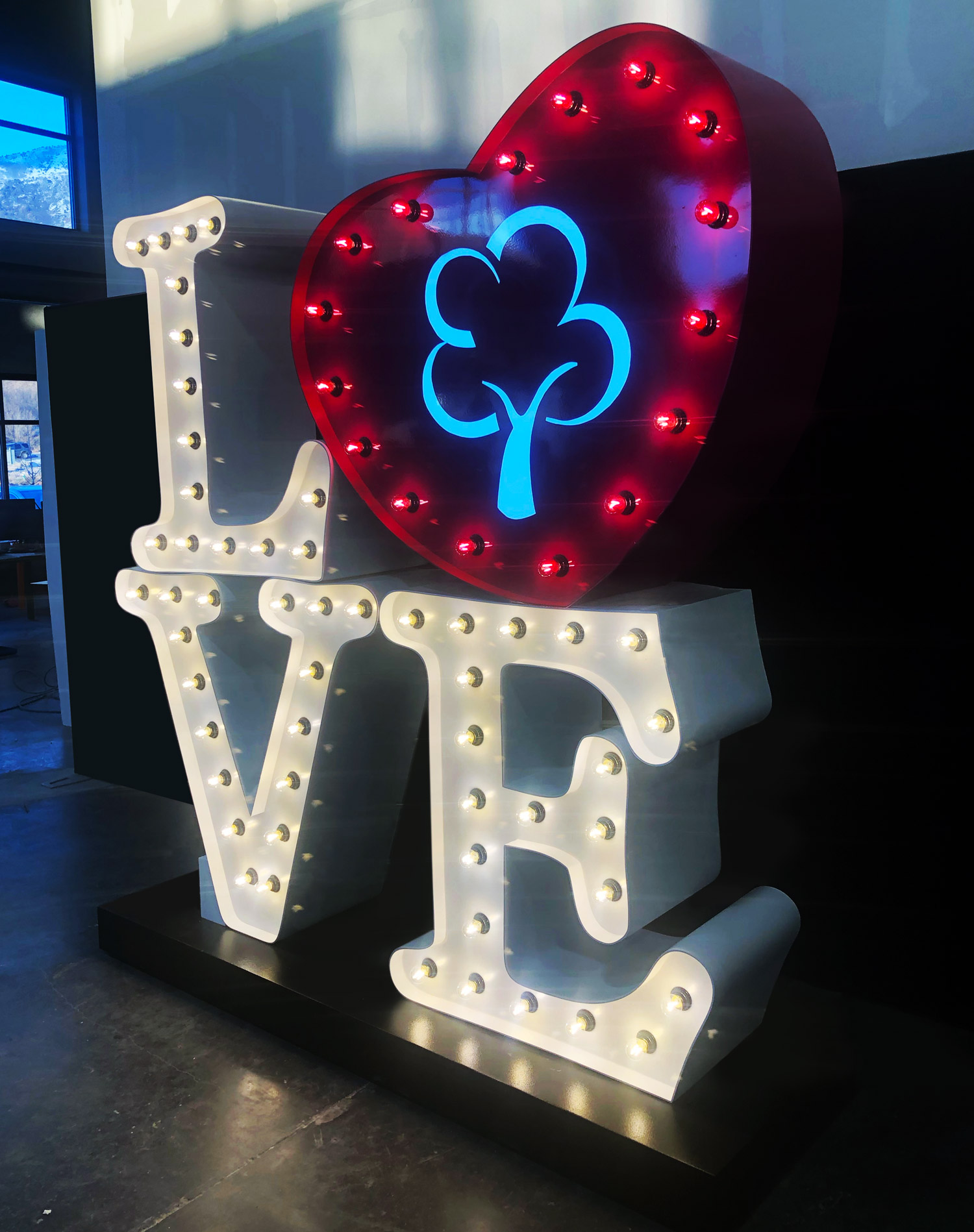
Features and Benefits of 3D Letters
In the realm of typography, 3D letters have emerged as a powerful visual tool that adds depth, dimension, and impact to the written word. Unlike their two-dimensional counterparts, these three-dimensional wonders captivate and engage viewers with their tangible presence and eye-catching design. There are many remarkable features of 3D letters that make them a dynamic and sought-after form of visual communication.
- Depth and Dimension: The most distinctive feature of 3D letters is their ability to transcend the flatness of traditional typography. By adding depth and dimension, these letters break free from the confines of the page or screen, creating a tangible and immersive experience. Whether crafted from materials like metal, wood, acrylic, or foam, the physicality of these letters commands attention and engages viewers on a visceral level. Big is an understatement.
- Visual Impact: The inherent visual impact of these letters is undeniable. Their three-dimensional form creates a bold and striking visual statement, capturing the attention of passersby and leaving a lasting impression. Whether displayed as standalone sculptures, integrated into signage, or used in branding materials, these letters have a commanding presence that demands attention and elevates the overall aesthetic of any design.
- Texture and Materiality: Unlike their flat counterparts, 3D letters introduce an element of texture and materiality to typography. The choice of materials, finishes, and textures can greatly influence the visual and tactile experience of these letters. From the sleek and polished surface of metal to the warm and natural grain of wood, the materiality of these letters adds depth and character, inviting viewers to not only see but also touch and feel the letters.
- Creative Customization: One of the most exciting features of 3D letters is the ability to customize them according to individual preferences and design needs. These letters can be tailor-made to match specific fonts, styles, and sizes, allowing for endless creative possibilities. Whether it’s incorporating unique shapes, adding decorative elements, or experimenting with different colors and finishes, customization transforms these letters into personalized works of art that perfectly align with the vision of a project or brand.
- Interplay of Light and Shadow: The three-dimensional nature of these letters gives rise to captivating interplays of light and shadow. When light interacts with the protruding surfaces and recessed areas of the letters, it creates dynamic shadows and highlights that enhance their visual impact. This interplay adds depth, dimension, and visual interest, breathing life into the letters and making them visually dynamic and captivating.
- Versatility in Size and Scale: 3D letters offer versatility in terms of size and scale. They can be created in various dimensions, ranging from small, intricate designs to large-scale installations. This versatility allows for their application in diverse settings, from intimate interior spaces to expansive outdoor environments. The ability to scale these letters opens up opportunities for creative expression, ensuring that they can make an impact in any context.
- Durability and Longevity: Crafted from sturdy and resilient materials, 3D letters are designed to withstand the test of time. Whether exposed to outdoor elements or displayed in high-traffic areas, these letters retain their structural integrity and visual appeal. Their durability ensures that they can serve as long-lasting features in signage, architectural installations, and public artworks, maintaining their impact and allure over time.
- Multisensory Experience: Unlike flat typography, 3D letters offer a multisensory experience that engages more than just the sense of sight. The tactile nature of these letters invites viewers to touch and interact with them, creating a deeper connection and sense of engagement. This multisensory experience also extends to the auditory realm. In certain cases, 3D letters can incorporate sound elements, such as integrated speakers or interactive mechanisms that produce audio effects. This integration of sound adds another layer of immersion and interactivity, making the experience of encountering these letters truly captivating and memorable.
- Versatility in Display: 3D letters offer flexibility in terms of display options. They can be freestanding, mounted on walls, suspended from ceilings, or integrated into architectural elements. This versatility allows for creative exploration and integration into various design contexts. Whether they serve as standalone artworks, functional signage, or decorative elements within a larger composition, 3D letters can adapt to different display requirements and enhance the overall aesthetic of the space.
- Integration of Technology: With the advancement of technology, 3D letters have also embraced innovation. They can be integrated with lighting elements, such as LEDs or programmable lights, to create captivating visual effects and enhance their visibility. Additionally, advancements in digital fabrication techniques, such as 3D printing, enable the creation of intricate and complex letterforms that were once challenging to achieve. The integration of technology expands the creative possibilities for 3D letters , pushing the boundaries of design and offering exciting opportunities for experimentation.
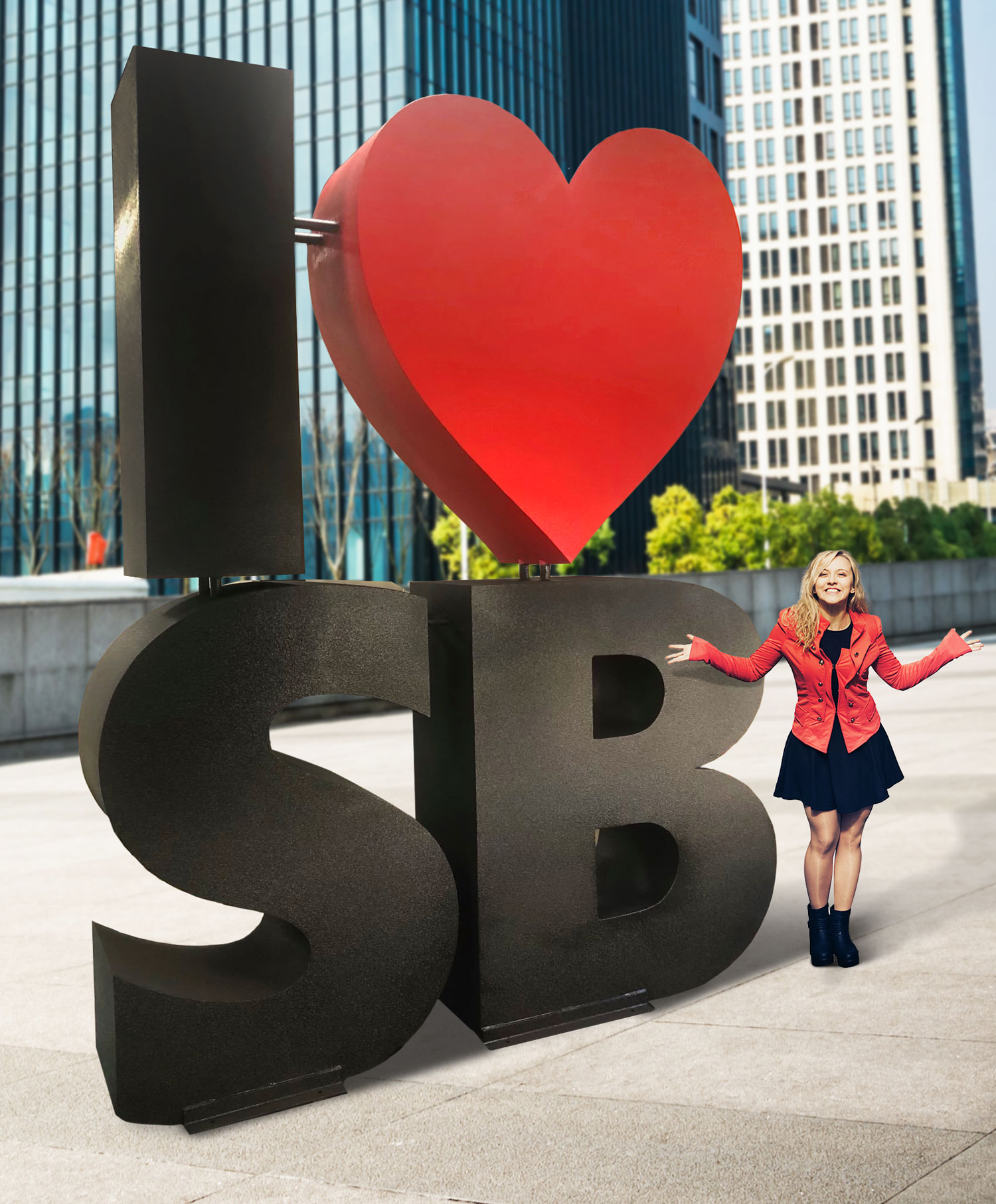
In the world of typography and visual communication, 3D letters have revolutionized the way we engage with text and design. There are many remarkable benefits of 3D letters. They have become indispensable tools for effective communication and creative expression.
- Improved Readability: The depth and dimension of 3D letters enhance readability, making them easier to perceive and understand. The protruding nature of these letters creates distinct outlines and shadows, providing visual cues that aid in letter recognition and word comprehension. This improved readability is especially beneficial in signage, wayfinding systems, and any application where clear and legible communication is essential.
- Tangible and Engaging Experience: 3D letters offer a tangible and engaging experience that goes beyond mere visual perception. Their three-dimensional nature invites viewers to interact, touch, and explore the letters, creating a multisensory engagement that enhances the overall experience. This hands-on approach fosters a deeper connection between the audience and the message, leaving a lasting impression and improving information retention.
- Brand Differentiation: For businesses and brands, standing out from the competition is paramount. 3D letters offer a unique and impactful way to differentiate a brand’s visual identity. By incorporating three-dimensional typography into logos, signage, and marketing materials, businesses create a distinct and memorable brand presence. The depth, texture, and customization options of 3D letters allow brands to showcase their personality, values, and commitment to quality, effectively setting themselves apart in the minds of consumers.
- Architectural Integration: One of the significant advantages of 3D letters is their seamless integration into architectural environments. Whether it’s interior design, exterior building facades, or public spaces, these letters blend harmoniously with the physical surroundings. By integrating typography into the architectural fabric, 3D letters become part of the environment, enhancing the aesthetics of the space and conveying a cohesive visual message. This integration helps create a unified and immersive experience for visitors and occupants.
- Versatility in Design: The versatility of 3D letters opens up a world of creative possibilities. They can be customized to align with specific fonts, styles, and design visions, allowing for endless variations and creative exploration. Whether it’s the choice of materials, finishes, colors, or textures, designers can create unique and eye-catching letterforms that perfectly match the intended aesthetic and message. This versatility empowers designers to create impactful and memorable designs that align with specific branding, artistic, or thematic objectives.
- Attention-Grabbing Signage: Signage plays a critical role in grabbing attention, conveying information, and guiding people. 3D letters are highly effective in signage applications as their three-dimensional presence makes them significantly more noticeable compared to flat signage. Whether it’s outdoor signage, retail displays, or exhibition graphics, 3D letters ensure that the message stands out, increasing visibility and attracting the desired audience.
- Emotional Connection: The tactile nature of 3D letters evokes a sense of emotional connection with the viewer. By adding depth and texture to typography, these letters create a more intimate and personal experience. The physicality of the letters elicits a sensory response, allowing viewers to feel a connection to the message being conveyed. This emotional connection can be particularly powerful in artistic installations, memorials, or brand campaigns where evoking specific feelings or resonating with the audience on a deeper level is desired.
- Unique Artistic Expression: For artists and designers, 3D letters provide a unique platform for artistic expression. They offer a three-dimensional canvas to explore typography, form, and composition. Artists can experiment with different materials, textures, and techniques to push the boundaries of creativity and create visually stunning sculptures and installations. The depth and dimension of 3D letters add a new layer of complexity and intrigue to typographic art, allowing for innovative and thought-provoking creations.
- Memorable Experiences: In a world bombarded by visual stimuli, creating a memorable experience is crucial. 3D letters have the power to leave a lasting impression on viewers. Whether it’s through their captivating design, interactive nature, or tactile qualities, these letters engage multiple senses and create a memorable encounter. Whether in an art gallery, retail environment, or public space, the distinctiveness of 3D letters ensures that they remain etched in the minds of those who experience them.
3D letters are a captivating fusion of art, design, and craftsmanship. Their seamless integration into architectural environments, versatility in design, and ability to evoke emotional connections make them valuable tools in various creative and communicative endeavors. As the demand for immersive and impactful design continues to grow, 3D letters will undoubtedly remain at the forefront of visual communication, unlocking new possibilities for artistic expression, brand identity, and captivating storytelling.
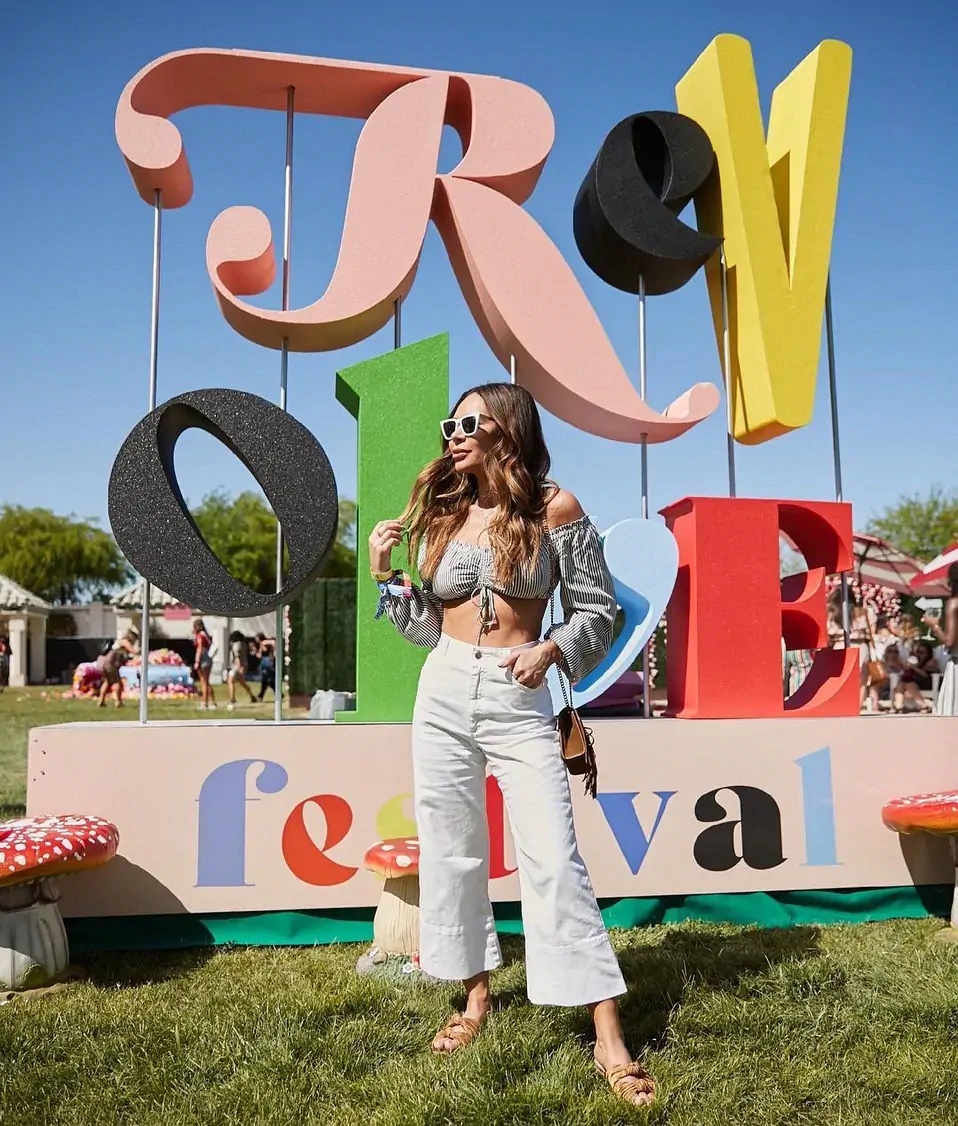
Pricing of Custom 3D Letters
The price of custom 3D letters are based on the volume of materials (size of the letters), type of materials, the time it takes to create the 3D design, production labor, and possible installation time and materials, as well as other specific elements unique to the project. Each large letter project is bid individually and the best way to determine cost is to email us, call us at 385-206-8700, or fill out the form below and let us bid on your project.
Get a Free Price Estimate for 3D Letters
Custom Fabrication Workflow
Common Questions & Answers
What are 3D letters? 3D letters, also known as three-dimensional letters, are typographic elements that have depth and dimension. Unlike traditional two-dimensional letters, which are flat and lack spatial qualities, 3D letters are designed to have a three-dimensional form, making them visually prominent and attention-grabbing. These letters are typically used in signage, branding, and design to create a striking visual impact and enhance the overall aesthetic appeal.
The distinguishing feature of 3D letters is their physicality. They are crafted to have depth, thickness, and volume, giving them a tangible and substantial presence. This is achieved through various techniques, such as carving, molding, or fabrication using materials like metal, acrylic, wood, or foam.
The primary purpose of 3D letters is to make text more visually engaging and readable. By incorporating depth and dimension, they add a sense of prominence and visibility, making the letters stand out from their surroundings. This enhanced visibility is particularly beneficial for signage applications, where the goal is to attract attention and effectively convey information.
How do you do 3d letters? Creating 3D letters involves various techniques and methods to give typographic elements depth and dimension. Here are some common approaches used to achieve three-dimensional effects:
- Carving: Carving is a traditional method where letters are manually sculpted or carved from a solid material such as wood, stone, or foam. Skilled artisans use chisels, knives, or carving tools to shape the letters, creating depth and texture through the removal of material.
- Molding and Casting: In this technique, letters are first created in a mold using a flexible material like silicone or rubber. Once the mold is made, it can be used to produce multiple copies of the letters using casting materials such as resin or plaster. The resulting casts replicate the desired three-dimensional shape.
- Fabrication: Fabrication involves cutting out letterforms from various materials like metal, acrylic, or foam using CNC (Computer Numerical Control) machines or laser cutters. These machines follow precise digital designs, allowing for accurate and intricate shapes. The individual components are then assembled to form the three-dimensional letters.
- Layering and Building: Another method is to build up layers of material to achieve the desired three-dimensional effect. For example, in foam-based letters, layers of foam are stacked, glued, and shaped to form the letterforms. This layering process creates volume and depth, which can be further refined through sanding and shaping.
- 3D Printing: With the advent of 3D printing technology, creating 3D letters has become more accessible. 3D printers can produce three-dimensional objects based on digital designs. The letters are created layer by layer, adding material until the desired shape is achieved. This method allows for precise customization and intricate detailing.
Once the letters are created using any of these techniques, they can be further refined through sanding, painting, or applying various finishes to achieve the desired visual effect. The choice of materials, techniques, and finishing options depends on the desired aesthetics, application, and durability requirements.
It is important to note that expertise, skill, and specialized tools may be required for certain techniques. Therefore, professional craftsmen, sign makers, or fabrication services are often sought to ensure high-quality results.
What are the different types of three dimensional letters? There are several different types of three-dimensional letters, each offering unique characteristics and visual effects. Here are some common types:
- Raised Letters: Raised letters are three-dimensional letters that are physically raised from the surface they are mounted on. They can be made from various materials such as metal, acrylic, or wood and are typically mounted using standoffs or adhesive. Raised letters create a prominent and eye-catching display, adding depth and dimension to the typography.
- Cut-out Letters: Cut-out letters are three-dimensional letters that are created by cutting out the letterforms from a solid material, leaving the negative space around the letters. This technique allows the background or surface behind the letters to show through, creating a visually interesting and dynamic effect. Cut-out letters can be made from materials like metal, acrylic, or wood.
- Backlit Letters: Backlit letters are three-dimensional letters that are illuminated from the back, creating a halo effect or a glow around the letters. The letters are typically made from translucent materials such as acrylic or glass and are mounted on a surface with lighting positioned behind them. Backlit letters are commonly used in signage to enhance visibility and create an eye-catching display, especially in low-light or nighttime environments.
- Channel Letters: Channel letters are three-dimensional letters with a hollow channel inside. The letters are typically made from metal, acrylic, or a combination of both. The front face of the letters can be either solid or translucent, allowing for backlighting. Channel letters are commonly used in outdoor signage and are known for their bold and professional appearance.
- Fabricated Letters: Fabricated letters are three-dimensional letters that are built by fabricating individual components and assembling them together. The components can be made from materials such as metal, acrylic, or foam. Fabricated letters offer versatility in design and can be customized to achieve various shapes, sizes, and finishes.
- Cast Letters: Cast letters are three-dimensional letters that are made by pouring a liquid material such as metal, resin, or plaster into a mold and allowing it to harden. The mold is created based on the desired letterforms. Cast letters can have a solid or hollow construction, and the material choice can influence the appearance and texture of the letters.
What are best fonts for 3D letters? When it comes to choosing fonts for 3D letters, there are certain characteristics that work well in achieving a visually appealing and legible result. Here are some font categories that are often considered suitable for 3D lettering:
- Bold and Serif Fonts: Fonts with bold and prominent letterforms tend to translate well into 3D. Serif fonts, which have small decorative strokes at the ends of the letterforms, can add an elegant and refined touch to the three-dimensional effect. Examples of bold serif fonts that work well in 3D include Times New Roman, Bodoni, or Georgia.
- Geometric and Sans-Serif Fonts: Geometric and sans-serif fonts offer a clean and modern aesthetic that can be effectively translated into 3D designs. Their simple and straightforward letterforms lend themselves well to three-dimensional representation. Fonts like Helvetica, Futura, or Gotham are popular choices in this category.
- Display and Decorative Fonts: Some display and decorative fonts can be suitable for 3D lettering, especially when used sparingly or for specific design purposes. These fonts often have unique and elaborate letterforms that can be visually interesting in three dimensions. However, it’s important to ensure that the intricate details of these fonts remain legible when translated into 3D. Examples of display fonts that can work well include Impact, Bebas Neue, or ChunkFive.
- Custom or Modified Fonts: Creating custom or modified fonts specifically designed for 3D lettering can result in unique and tailored results. These fonts can be developed based on existing fonts or created from scratch to achieve the desired three-dimensional effect. Customizing letterforms allows for greater control over the depth, angles, and proportions, resulting in a cohesive and visually striking 3D design.
When selecting fonts for 3D lettering, it’s essential to consider factors such as readability, the overall aesthetic of the project, and its intended purpose. It’s also important to ensure that the chosen font aligns with the brand identity or design concept. Consulting with a professional designer or typographer can provide valuable insights and expertise in selecting the best font for a specific 3D lettering project.
Remember, readability and legibility are key, so it’s crucial to choose fonts that maintain clear distinction between the letters, even when presented in a three-dimensional format.
Do you have a question we didn’t answer? Don’t hesitate to contact us at 1-385-206-8700 or [email protected].
Worldwide Delivery
WhiteClouds has delivered 3D letters around the world.
History of 3D Letters
The history of 3D letters is a captivating tale that traces back to the earliest forms of written communication. From ancient civilizations to the modern digital era, the evolution of these three-dimensional wonders reflects the ever-changing landscape of typography and visual expression.
Ancient Origins
The origins of three-dimensional letters can be traced back thousands of years to ancient civilizations. In ancient Egypt, hieroglyphics carved into stone walls exemplified the use of raised, three-dimensional symbols. These early forms of relief sculpture showcased the desire to give written symbols a physical presence, making them stand out and creating a lasting impression.
Roman Inscriptions
The Roman Empire played a significant role in the development of 3D letters . Romans utilized raised lettering in inscriptions carved into stone, marking important landmarks, buildings, and monuments. The inscriptions not only conveyed information but also showcased the grandeur and authority of the empire. The three-dimensional nature of these letters added a sense of prominence and permanence.
Medieval Craftsmanship
During the Middle Ages, the art of lettering reached new heights of intricacy and craftsmanship. Scribes and illuminators meticulously crafted three-dimensional letters in illuminated manuscripts, incorporating gold leaf, intricate ornamentation, and decorative flourishes. These masterpieces showcased the skill and creativity of artisans and laid the foundation for the integration of depth and dimension in typography.
Industrial Revolution and Signage
The advent of the Industrial Revolution brought about significant advancements in manufacturing and signage. With the rise of mass production, the production of three-dimensional letters became more accessible and cost-effective. Metalworking techniques, such as casting and stamping, allowed for the creation of durable and standardized 3D letters . These letters adorned shop signs, billboards, and architectural facades, serving as prominent markers of businesses and institutions.
Mid-20th Century Innovations
The mid-20th century witnessed several technological advancements that revolutionized the production and design of 3D letters . The introduction of plastics, such as acrylic, enabled the creation of lightweight and versatile lettering options. This breakthrough material offered endless possibilities for customization, vibrant colors, and varied finishes. Additionally, advancements in fabrication techniques, including CNC (Computer Numerical Control) machining and laser cutting, brought precision and efficiency to the production of three-dimensional letters.
Digital Era and 3D Printing
The advent of the digital era marked a significant turning point in the creation of 3D letters . Computer-aided design (CAD) software and 3D modeling allowed designers to conceptualize and visualize intricate letterforms with ease. The introduction of 3D printing technology further transformed the landscape, enabling the fabrication of complex and highly detailed 3D letters with speed and precision. This innovation opened up new avenues for artistic expression and customization.
Contemporary Innovations and Integration
In recent years, advancements in technology, materials, and design have continued to shape the evolution of 3D letters . The integration of LED lighting and programmable lights has added a dynamic and captivating element to these letters, enhancing their visibility and impact. With the rise of digital displays and interactive installations, 3D letters have found new ways to engage audiences, creating immersive experiences through the integration of sound, motion, and interactive elements.
The Future of 3D letters
As technology continues to evolve, the future of 3D letters holds exciting prospects. With advancements in materials science, we can expect the emergence of new materials that offer enhanced durability, sustainability, and unique visual effects. Augmented reality (AR) and virtual reality (VR) technologies are also poised to revolutionize the experience of 3D letters. Imagine a world where viewers can interact with three-dimensional letters in virtual spaces, where typography comes to life with motion, sound, and interactive elements, pushing the boundaries of creativity and engagement.
Furthermore, as society embraces the concept of smart cities and digital integration, 3D letters have the potential to play a crucial role in urban environments. These letters can serve as interactive signage, guiding people through streets, parks, and public spaces, providing real-time information, and fostering a sense of connectivity and engagement with the surrounding environment. As technology continues to advance, we can only imagine the remarkable possibilities that lie ahead, where 3D letters will continue to shape the way we communicate, connect, and experience the world around us.

